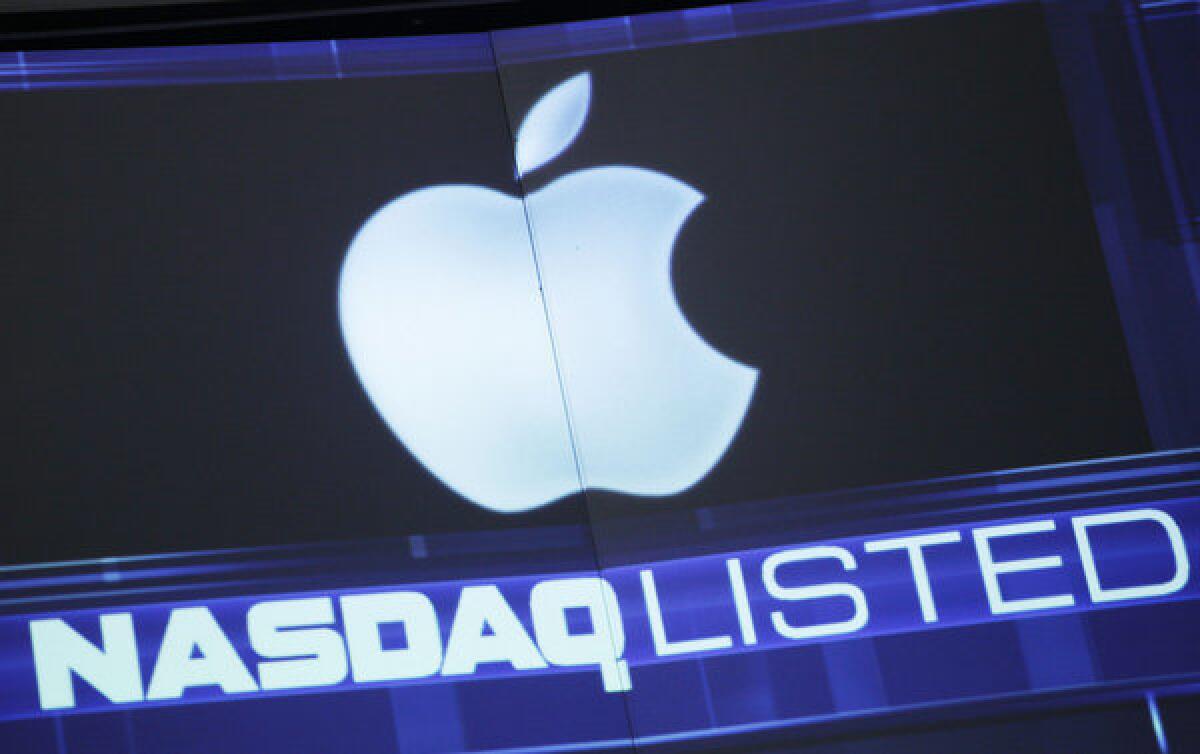Could Apple reduce the volatility of its stock?

- Share via
Another day, another few billion dollars of Apple’s market cap bounced around like a ping-pong ball by the stock market.
After flirting with the $500 barrier early in trading on Monday, the stock rebounded and was up 0.48% to $512.25 in mid-day trading. The gut-wrenching ride seemed to be driven by the usual mixed bag of data points.
PHOTO TIMELINE: Apple, from Foxconn uprising to a Mini roll-out
It’s become almost routine, as I wrote over the weekend in a story that tried to explain the extraordinary economic impact and volatility of Apple’s stock. But there was a related question that people discussed in the reporting of that story that I didn’t include:
Is there anything Apple could do to reduce the volatility of its stock?
There doesn’t seem to be any consensus on this point. But there are a couple of main suggestions, or theories at least.
The first was spelled out by Jason Schwarz, of Marina del Rey, who edits EconomicTiming.com, which sends out up to five newsletters each week to its 1,000 clients that focus in large measure on Apple. He also helps run Lone Peak Asset Management, which has about $500 million in assets.
Schwarz said Apple could dramatically increase the size of the stock buyback it announced earlier this year. You’ll recall that back in March, Apple announced it would spend $10 billion to repurchase shares of its stock. With more than $100 billion in cash in its piggy bank, Schwarz suggested Apple could radically increase the size of that plan to make the stock more scarce on the markets.
Schwarz said: “They should increase the size of the buyback if Tim Cook wants to get rid of the volatility. Until that happens, investors need to get used to this kind of volatility.”
The second idea came from reader and Apple shareholder Dan Shelburne, who blames short sellers and options traders for manipulating the share price to make quick gains. Among the things he suggested that could blunt the impact of these forces was a 10-to-1 stock split that would reduce the share price and spread the shares (hopefully) more widely.
“If the above described action netted a drop of 50 cents instead of $5.00, I think the manipulators would go find a new yo-yo,” Shelburne wrote.
Just to be clear, nobody is betting the Apple will do anything at the moment.
“It’s not Apple-like,” said Brian White, analyst at Topeka Capital Markets. “They don’t try to react to the stock price. They don’t try to game the financial market.”
In the short term, that means investors are going to need strong stomachs to hold tight, as the stock showed Monday it remained vulnerable to big swings off each new data point that trickles out.
Over the weekend, Apple announced it had sold 2 million iPhones 5s in China, essentially stomping on rumors that demand was light due to the lack of lines at stores. On the other hand, Citigroup downgraded the stock Sunday night from “buy” to “neutral,” and cut its price target to $575 from $675 citing weak supply chain orders.
It seems this volatility is likely to continue through the rest of the year, and possibly until Apple reports earnings next month, which is usually the only way to calm or confirm fears of analysts and investors.
What do you think? Should Apple take steps to reduced the volatility of its stock? Would either a big stock repurchase or a radical stock split help?
Follow me on Twitter @obrien.
ALSO:
Apple iPad and other tablets crush sales of e-book readers
Wal-Mart puts iPhone 5 on sale for $127; are iPhone sales dragging?
An iPad mini with Retina display? Rumor of next iPad mini hits the Web
More to Read
Inside the business of entertainment
The Wide Shot brings you news, analysis and insights on everything from streaming wars to production — and what it all means for the future.
You may occasionally receive promotional content from the Los Angeles Times.











